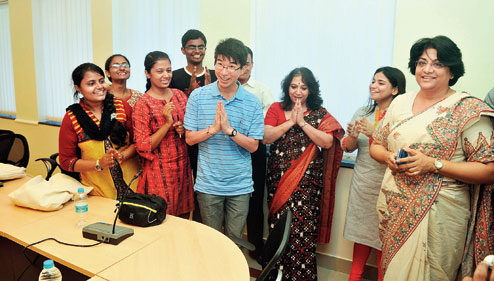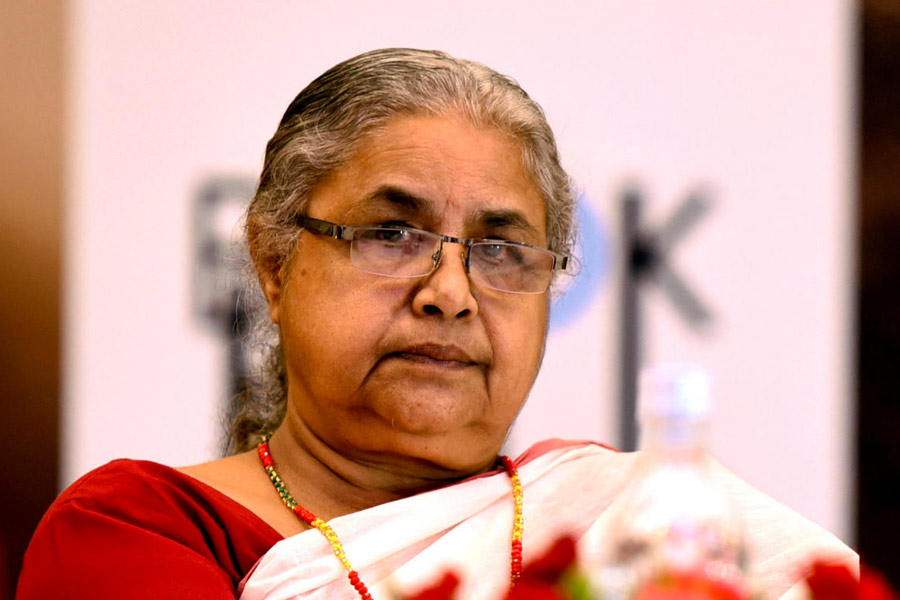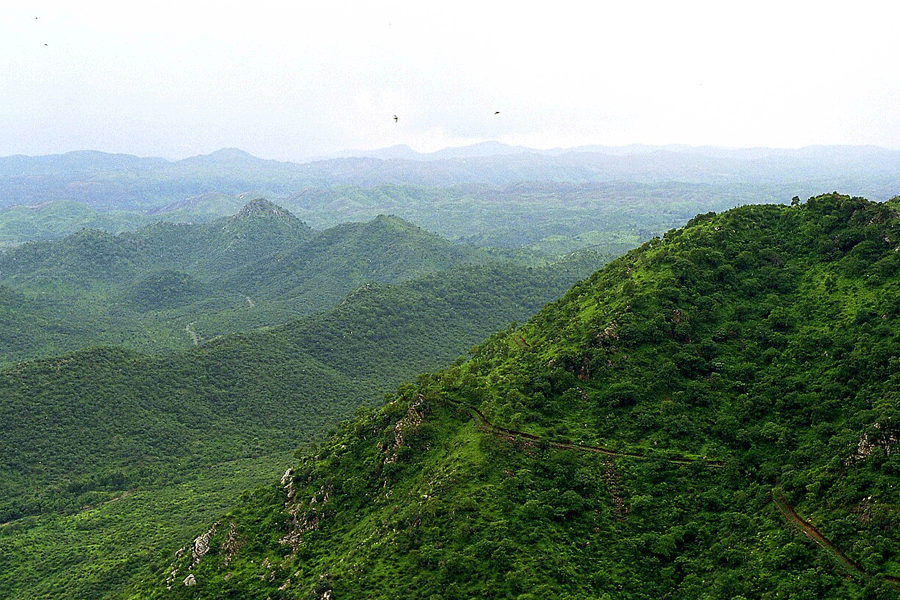 |
| Students with teachers, vice-chancellor Gopa Sabharwal and dean (academic planning) Anjana Sharma. Telegraph picture |
Rajgir, Sept. 1: At 9.30 this morning, Nalanda University kept its tryst with destiny and embarked on its new journey over 800 years after the ancient seat of learning was destroyed.
The idea for a new university, first floated by then President APJ Abdul Kalam in 2006 and taken forward by Amartya Sen, finally came to fruition with classes beginning at the Rajgir International Conventional centre, around 15km from the ruins of the ancient institution and 110km southeast of Patna. Eleven students — three from the School of Historical Studies and eight from the School of Ecology and Environment Studies — became a part of history by being the first to attend classes at the new university.
Founded in the 5th century AD, Nalanda was one of the first great global universities that survived until 1193. It was devoted to Buddhist studies, but also offered teaching in medicine, mathematics, astronomy, politics and fine arts. Among its early students was Hiuen Tsang, the 7th century Chinese traveller.
The university started suffering from lack of patronage by Indian kings in the 11th and 12th centuries. The end came in 1193 when Ikhtiyar-uddin Mohammed Bin Bakhtyar Khilji, a general of Qutbuddun Aibak, sacked the university and set it on fire, apparently, as legend has it, mistaking it for a fort. The end of the great institution came at a time when universities such as those in Oxford and Bologna (Italy) were just getting started — it would take another 500-odd years for Harvard or Yale to be established.
During its heydays, the ancient seat of learning is believed to have housed 10,000 students and 1,500 teachers. Yin Ker, adjunct assistant professor of School of Historical Studies, Nalanda University, said: “Some historians and books claim that the ancient university used to buzz with activity with a large number of students and teachers. There is no evidence to prove it.”
By contrast, the new university made a humble start with six teachers — four at the School of Historical Studies and two at the School of Ecology and Environment Studies. Besides Yin, Samuel Wright, Sharman Mukherjee and Kashshaf Ghani are the faculty members of School of Historical Studies. The two teachers of School of Ecology and Environment Studies are Mihir Deb and Somnath Bandyopadhya. Mukherjee joined the university today.
During the class break at 11.30am, vice-chancellor Gopa Sabharwal and dean, academic planning, Anjana Sharma introduced the students to the media. Addressing reporters, Sabharwal said: “It is a great day for the entire Nalanda University family and the countries associated with the project.”
The university’s governing board members and former chief minister Nitish Kumar congratulated Sabharwal.
The vice-chancellor said the new university, like the ancient one, would focus on research. “As the scholars of the ancient university, we too believe that knowledge has to be shared. The new varsity will have shades of the ancient Nalanda University and will focus on zero-energy level, zero-pollution emission and a green milieu,” she said.
The structure of the new university would resemble the ancient seat of learning. Its dome-shaped library would be centrally located. The ancient university had three centrally located libraries, one of which was nine-stories high.
Samuel Wright, associate professor at School of Historical Studies, said: “The new university has started showing the signs of being identical to the old seat of learning, where people from abroad used to come to study. Two students from abroad have already joined the varsity.”
Akiro Nakamvva from Japan and Ngawang from Bhutan have joined the School of Historical Studies. Chinese traveller Hiuen Tsang studied and taught at the old seat of learning, which was spread out over an area of over 14 hectares.
The new university campus would come up on 452 acres, around 2.5km from the Rajgir bus stand. The upcoming Nalanda University would rely heavily on environment for an ethnic-yet-modern campus. It will be eco-friendly in more ways than one.
At various points of the campus, towers would be erected, which would act as air-conditioners. They would suck the outside air and, after absorbing the moisture, release it inside the campus.
Till the new campus is ready, the varsity would function from a makeshift campus on the premises of a health care and research unit near Rajgir bus stand.
Finishing touches are being given to the temporary facility, where the classes of the 11 students, selected through screening, would be conducted. The two-year course fee of each student is Rs 3 lakh.
The students were elated after the first day’s classes were over. “The weather was balmy but cloudy when we went for the classes in the morning. When we came out enlightened on how our course is inter-disciplinary and different than traditional courses, the skies had cleared up,” said Daniel Machame, a student of ecology and environment.










